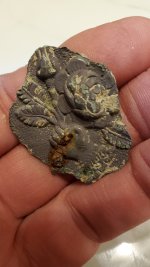eyemustdigtreasure
Silver Member
- Mar 2, 2013
- 3,602
- 5,581
- Detector(s) used
-
Fisher Gold Bug Pro
Tesoro Cibola
Nokta Pointer; Phillips SHS5200 phones
Nokta Macro SIMPLEX +
- Primary Interest:
- Metal Detecting
human skeleton found on famous shipwreck, the same site as Its most famous find to date has been a surprisingly sophisticated clockwork device that modelled the motions of the Sun, Moon and planets in the sky—dubbed the ‘Antikythera mechanism’.
Human Skeleton Found on Famed Antikythera Shipwreck - Scientific American
Human Skeleton Found on Famed Antikythera Shipwreck - Scientific American







